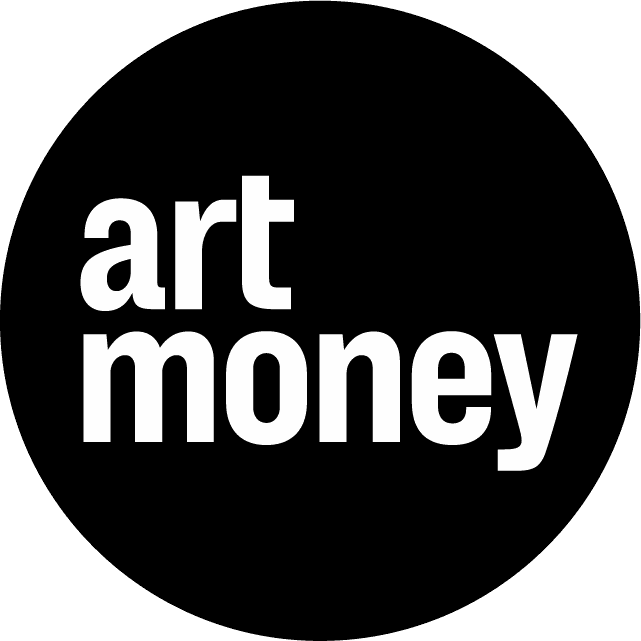The needle skipped the groove of the present.
Into this dark forest you have already turned.
- Timothy Morton
Winter is often shrouded by longing. In its darkest moments we are forced to resist bitter doldrums of seclusion, melancholy and numbness – however we know best. For many, this sense of survival turns inward: siloed in the domestic interior of our homes, trapped in the carceral escapism of an isolated mind, moored inexorably to the decelerating speed and colour of life. Glade is a solo exhibition of new works by Thom Trojanowski that speaks to the solemn and fantastical heart of wintertime. Featuring a series of bold and expressive paintings centred by a large-scale ceramic installation, Trojanowski employs his signature style of acidic and enigmatic landscapes to evoke the cold and icy sunlight of darker days, the austere yet fanciful means by which we go on. Conditioned by this aura of glass, Glade is an exhibition that nevertheless presents us with the daydreaming, the bright and unabating desire we have to reconnect with the outside – to the richness and magic of the ecological world around us.
Conceived whilst living in Paris at the end of 2022, Glade was produced by Trojanowski during a period of unusual remoteness from the natural landscape, especially the dense and mystical preserve of the forest – an environment and subject essential to Trojanowski throughout his life. Raised in the woody lands of middle England by zoologist and artist parents, Trojanowski has consistently returned to the forest as a site for exploration and metaphor – whether Tunstall Forest near Suffolk or Hoge Kempen outside Genk in Belgium, where Trojanowski now lives and works. A personal champion for the Japanese custom of forest-bathing and its positive effects on mental health and wellbeing, the exhibition both references and instantiates the architecture of a glade – a large clearing or open area within a forest – as a psychological space to embattle the leaden mood of cold urban austerity, and to use the power of memory and emotion to rekindle one’s vital relationship to the earth.
Adopting the tremble of a cold hand, Trojanowski captures his subjects as if one’s eyes were caught with frostbite. Recurring motifs of butterflies, frogs and harlequin figures are enveloped by splinters of ivory sunlight and marbled shadows of teal, cream and stone, taken as he was by the dramatic use of colour and light in the many Impressionist masterpieces he saw whilst living in the French capital. Loosely brushed, with confident, free-flowing use of pigment, linseed oil and turpentine, Glade balances spontaneity and lightness with physicality, scale and material intuition - as if his subjects are placed the verge of a shuddering ice cap, or paralysed by the grave beauty of a butterfly’s kiss. Inspired in part by the legacy of the Young Poland movement, of which his great grandfather was a prominent member, Trojanowski fuses the warm and decorative energy of his Polish heritage with shades of surreal and expressionist gestures to create graphic and textured organic forms,
enhanced by a piercing and contemporary technological pulse.
Punctuated by his trademark details of florescent orange and streaks of depthless blue, the complexion and decomposition of tone central to Trojanowski’s work has an eerily psychedelic nature, bleached and mottled by the icy sky as much as it is intoxicated, made-strange and intensified by the mind’s third eye. With angular twists of bare and knotted branches captured in feverish swirls of colour and form, we are at once faced with the siren of ecological collapse as we are the weird and magical reality of a more-than-human world. For Trojanowski, the forest is indeed a place of contradictory and complex majesty - where one can get away from the speed and pressures of everyday urban life to reclaim a deep sense of enchantment with the natural world — if, at times, this may only be achieved the estranged and painterly invocation of memory, place and feeling.
For as the exhibition’s central protagonist, reclining with blissful and gormless charm, invites us to enter the glade for ourselves, we must remember that to embody an enraptured position of oneness with the forest must also come with a sobering recognition: that glades represent not only a tranquil and coveted oasis but also the devastating consequence of desolate soils, wild forest fires and unchecked deforestation. To enter the glade therefore assumes the messy contradiction of our ever-shifting – and conflicting – position to the natural landscape. A landscape which despite, or precisely because of his distance from it, Trojanowski’s recent body of work has felt more compelled than ever to capture in all its mystical and arrested beauty.
Written by Charlie Mills

